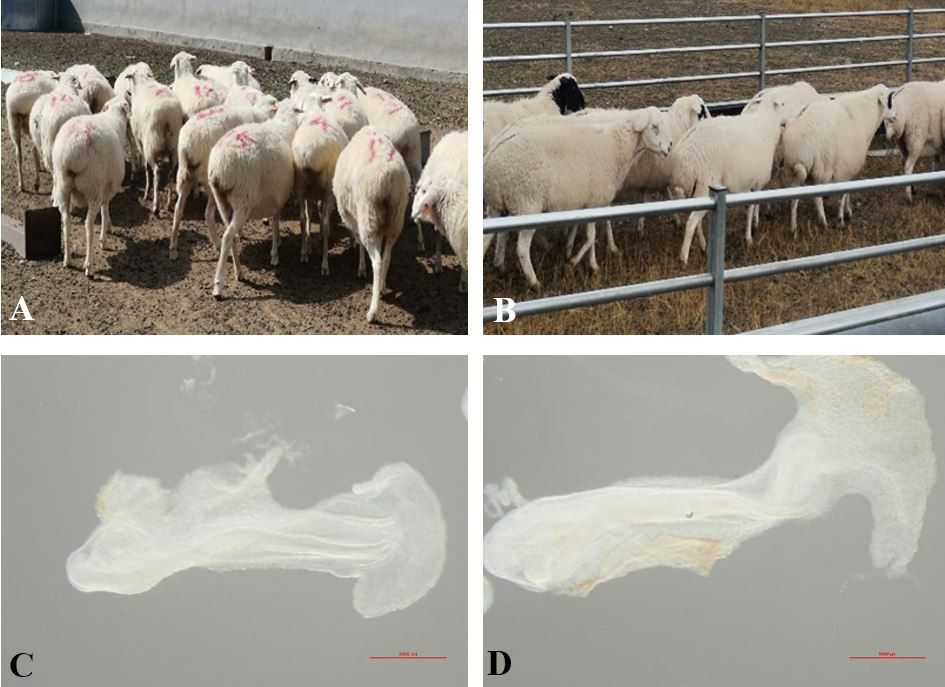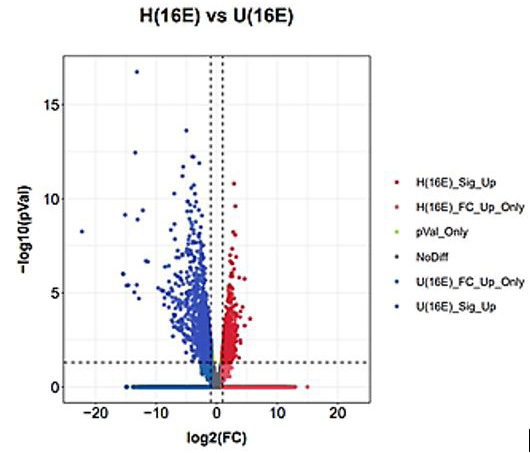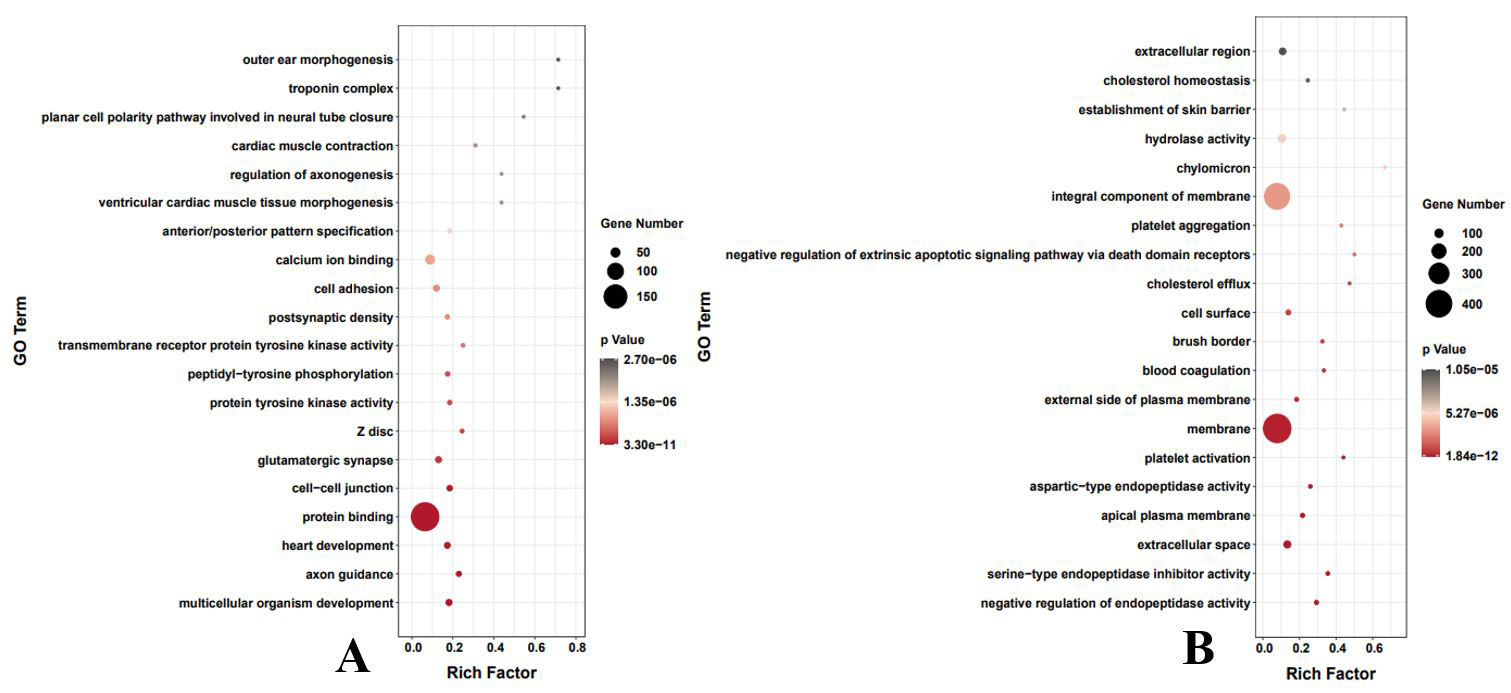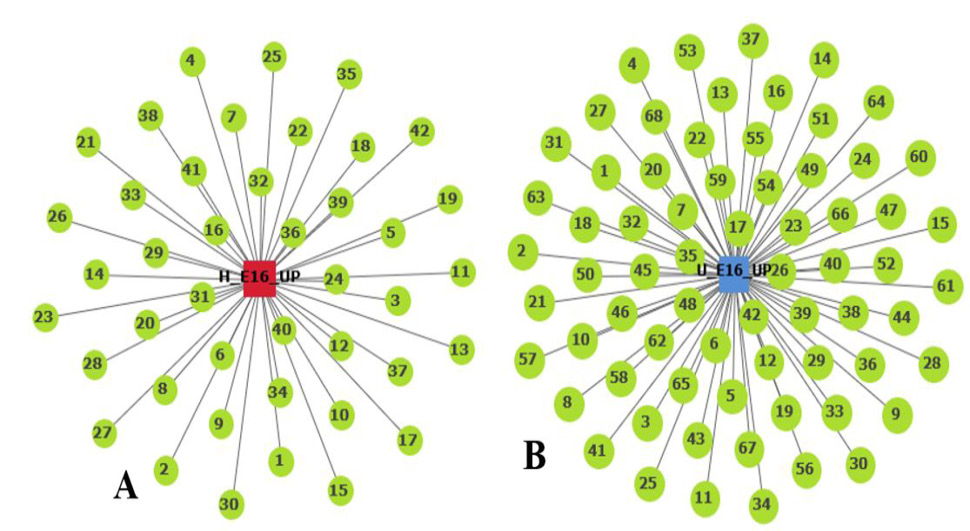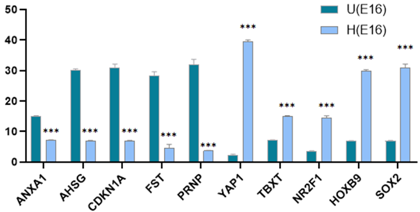Transcriptomic Comparative Analysis of Two Breeds of Mongolian Sheep at 16-day Embryos
Transcriptomic Comparative Analysis of Two Breeds of Mongolian Sheep at 16-day Embryos
Hong Su1,2, Lu Chen1,3, Wenrui Guo1, Daqing Wang1,3, Aolei Dou1,2, Jie Su1, Yanyan Yang4, Ying Tian4, Tingyi He4, Caiyun Wang1, Chenguang Du1, Haijun Li1, Xihe Li5, Guifang Cao1*, Yongli Song5* and Fuxiang Bao3*
The horizontal coordinate, log2(FC), represents the fold change of expression of genes in different samples. The vertical coordinate, -log10(pVal), represents the statistical significance of the difference in gene expression. Genes down-regulated in H(E16) are described as up-regulated in U(E16).
Top 20 GO terms of H(E16) (A); U(E16) (B). The horizontal coordinate Rich Factor represents the number of differential genes in the GO/total number of genes in the GO; A larger Rich factor indicates a higher degree of GO enrichment. The vertical coordinate is GO term, i.e., GO functional annotation. In the scatter plot, the size of the dots represents the number of differential genes, and the color of the dots represents the P-value of the enrichment analysis, i.e., the significance of the enrichment, with a P-value smaller than or equal to 0.05 indicating significant enrichment. The GO enrichment analysis scatter plot is based on the significance (P-value) of the enrichment of the top 20 GO terms.
mRNA sequencing results for randomly selected ten genes. *P < 0.05, **P < 0.01, and ***P < 0.001







